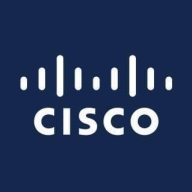

Splunk Observability Cloud and Cisco Intersight compete in the realm of cloud and data management solutions. Splunk Observability Cloud seems to have an upper hand due to its robust data integration and log searching speed, which offers adaptability and custom dashboard creation. Conversely, Cisco Intersight excels in cloud and data center integration, particularly for hybrid environments.
Features: Splunk Observability Cloud is recognized for its fast log searching capabilities, custom dashboard creation, and adaptability to integrate data seamlessly. It continuously develops to enhance efficiency and utility. Cisco Intersight stands out in cloud integration, effectively managing on-premises and hybrid environments. It also offers workflow automation and inventory management, providing comprehensive solutions for data center management.
Room for Improvement: Splunk Observability Cloud would benefit from simplifying its configuration and enhancing documentation. Users also desire more automated processes for data integration and improved real-time monitoring. Cisco Intersight could improve its hybrid cloud management and increase automation, while better integration with third-party tools and a more straightforward interface are also desired.
Ease of Deployment and Customer Service: Splunk Observability Cloud is appreciated for flexible deployment across various cloud environments though its technical support can be slow and sometimes lacks depth in responses. Cisco Intersight offers comparable deployment capabilities. Its support is generally seen as helpful, but like Splunk, there are calls for faster and more accurate responses.
Pricing and ROI: Splunk Observability Cloud is considered expensive, notably due to added licensing costs, though the comprehensive features often justify the price with a positive ROI through enhanced efficiency. Cisco Intersight is perceived as more affordable, offering competitive pricing and expected ROI, especially for enterprises benefiting from its data center integration features, though its higher initial cost remains a concern compared to alternatives like AWS and Azure.
It simplifies the onboarding of new hardware, reducing time spent on manual installations and configurations.
Using Splunk has saved my organization about 30% of our budget compared to using multiple different monitoring products.
Anyone working in front-end management should recognize the market price to see the true value of end-user monitoring.
I have definitely seen a return on investment with Splunk Observability Cloud, particularly through how fast it has grown and how comfortable other teams are in relying on its outputs for monitoring and observability.
For complex issues, it's challenging to get the right engineer quickly unless you have a specific contract like CX.
Cisco provides better support than anyone else.
Cisco technical support is helpful.
On a scale of 1 to 10, the customer service and technical support deserve a 10.
They have consistently helped us resolve any issues we've encountered.
They often require multiple questions, with five or six emails to get a response.
I rate its scalability a ten out of ten due to its capability to manage multiple domains and automate service requests.
Cisco Intersight is scalable enough for our needs, allowing management in a multi-environment setup and working remotely while deploying servers.
We've used the solution across more than 250 people, including engineers.
As we are a growing company transitioning all our applications to the cloud, and with the increasing number of cloud-native applications, Splunk Observability Cloud will help us achieve digital resiliency and reduce our mean time to resolution.
I would rate its scalability a nine out of ten.
Some steps are not included in the official documentation, which can create challenges.
It is always accessible online, secure, and allows access from any location, following strict authentication standards.
I would rate its stability a nine out of ten.
We rarely have problems accessing the dashboard or the page.
Unlike NetScout or regular agents for APM, RUM has many problems during the POC phase because customer environments vary widely.
There is a significant issue regarding migration from UCS Manager into Intersight without formatting the Fabric Interconnects (FI), which is problematic in a production environment.
It would be great to have a chat session mode AI so that when I am on standby and encountering issues, I could engage with it, much like ChatGPT.
When registering our devices and servers using tokens, auto-detection could make it easier by automatically identifying resources and adding them to the platform.
The out-of-the-box customizable dashboards in Splunk Observability Cloud are very effective in showcasing IT performance to business leaders.
The next release of Splunk Observability Cloud should include a feature that makes it so that when looking at charts and dashboards, and also looking at one environment regardless of the product feature that you're in, APM, infrastructure, RUM, the environment that is chosen in the first location when you sign into Splunk Observability Cloud needs to stay persistent all the way through.
There is room for improvement in the alerting system, which is complicated and has less documentation available.
The pricing is fair and reasonable, particularly for enterprises.
Cisco Intersight's license cost is very high compared to AWS and Azure solutions, which have lower initiation costs.
The pricing mechanism sounds fair.
Splunk is a bit expensive since it charges based on the indexing rate of data.
It is expensive, especially when there are other vendors that offer something similar for much cheaper.
It appears to be expensive compared to competitors.
This solution has provided time savings and required fewer people to operate this tool, rather than direct cost savings.
It provides visibility into other products and storage, and is beneficial for environments where Cisco and other vendors coexist, allowing full visibility of the entire infrastructure.
It also provides predictive analysis, predicting data leaks and making it easy to scale up servers remotely without requiring physical interference.
Splunk provides advanced notifications of roadblocks in the application, which helps us to improve and avoid impacts during high-volume days.
For troubleshooting, we can detect problems in seconds, which is particularly helpful for digital teams.
It offers unified visibility for logs, metrics, and traces.
| Product | Market Share (%) |
|---|---|
| Splunk Observability Cloud | 2.0% |
| Cisco Intersight | 1.7% |
| Other | 96.3% |


| Company Size | Count |
|---|---|
| Small Business | 4 |
| Midsize Enterprise | 4 |
| Large Enterprise | 7 |
| Company Size | Count |
|---|---|
| Small Business | 20 |
| Midsize Enterprise | 10 |
| Large Enterprise | 43 |
Cisco Intersight is Cisco’s systems management platform that delivers intuitive computing through cloud-powered intelligence. This platform offers a more intelligent level of management that enables IT organizations to analyze, simplify, and automate their environments in ways that were not possible with prior generations of tools. This capability empowers organizations to achieve significant savings in Total Cost of Ownership (TCO) and to deliver applications faster, so they can support new business initiates. The advantages of the model-based management of the Cisco UCS platform plus Cisco Intersight are extended to Cisco UCS servers and Cisco HyperFlex and Cisco HyperFlex Edge systems. Cisco HyperFlex Edge is optimized for remote sites, branch offices, and edge environments.
Splunk Observability Cloud offers sophisticated log searching, data integration, and customizable dashboards. With rapid deployment and ease of use, this cloud service enhances monitoring capabilities across IT infrastructures for comprehensive end-to-end visibility.
Focused on enhancing performance management and security, Splunk Observability Cloud supports environments through its data visualization and analysis tools. Users appreciate its robust application performance monitoring and troubleshooting insights. However, improvements in integrations, interface customization, scalability, and automation are needed. Users find value in its capabilities for infrastructure and network monitoring, as well as log analytics, albeit cost considerations and better documentation are desired. Enhancements in real-time monitoring and network protection are also noted as areas for development.
What are the key features?In industries, Splunk Observability Cloud is implemented for security management by analyzing logs from detection systems, offering real-time alerts and troubleshooting for cloud-native applications. It is leveraged for machine data analysis, improving infrastructure visibility and supporting network and application performance management efforts.
We monitor all IT Infrastructure Monitoring reviews to prevent fraudulent reviews and keep review quality high. We do not post reviews by company employees or direct competitors. We validate each review for authenticity via cross-reference with LinkedIn, and personal follow-up with the reviewer when necessary.